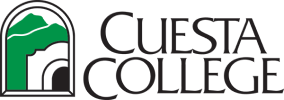
Program Summary
AUTO BODY TECHNICIAN - Associate in Science
2019 - 2020, 2020 - 2021, 2021 - 2022, 2022 - 2023, 2023 - 2024, 2024 - 2025
Students enrolled in these courses have the opportunity to expand their knowledge relative to auto body technology and develop entry level skills required for employment in the automotive collision and repair service industry. Successful completion of course requirements prepares students for certification as a professional body and collision repair technician offered through I-CAR.
Career Opportunities
Required Courses (36.5 credits)
Units: 36.5
ATCH 160
AUTOMOTIVE ELECTRICAL ACCESSORIES
4.0
ATCH 168
AUTOMOTIVE REPAIR BUSINESS
3.0
ABOD 170
AUTO BODY REPAIR I
3.0
3.0
ABOD 171
ADVANCED AUTO BODY
3.0
OR
ABOD 177
ADVANCED AUTOMOTIVE PAINTING
3.0
ABOD 175
AUTOMOTIVE PAINTING
5.0
ATCH 284
BRAKING SYSTEMS
4.0
ATCH 186
CHASSIS AND SUSPENSION SYSTEMS
3.0
ATCH 188
AUTOMOTIVE HEATING AND AIR CONDITIONING
3.0
ATCH 109
INTRODUCTION TO AUTOMOTIVE COMPUTERS
2.5
WELD 270A
BASIC WELDING
3.0
WELD 270C
WELDING: GMAW & GTAW
3.0
Plus, pass a minimum of two certification tests for the National Institute of Automotive Service Excellence (ASE)
Total: 36.5
Program Outcomes
Select and justify proper use of: personal protection equipment (PPE), and the storage and handling of materials associated within the Auto Collision Industry.
1) Completion of safety tests with a 95% or higher marks. Completed orientation of personal protective equipment utilized in laboratory (100%). Completion of job safety orientation of industry tools, equipment, and materials utilized in the course (100%).
2) Evaluation of data per completed classroom and laboratory assignments, projects and hands on assessments reflected by course grading rubrics and the Inter-Industry Conference on Auto Collision Repair (I-CAR) National Automotive Technicians Education Foundation (NATEF) Task lists.
3) Student surveys.
Analyze, diagnose, and exhibit safe and efficient methods for repairing and refinishing vehicle collision damage.
1) Completion of classroom and laboratory assignments and tasks with 70% or higher marks.
2) Evaluation of data per completed classroom and laboratory assignments, projects and hands on assessments reflected by course grading rubrics and the Inter-Industry Conference on Auto Collision Repair (I-CAR) National Automotive Technicians Education Foundation (NATEF) Task lists.
3) Student surveys.
Diagnose and demonstrate technical knowledge and critical thinking capabilities in the analysis of vehicle construction and material considerations pertaining to collision damage.
1) Completion of classroom and laboratory measuring, estimating, and other related assignments and tasks with 70% or higher marks.
2) Evaluation of data per completed classroom and laboratory assignments, projects and hands on assessments reflected by course grading rubrics and the Inter-Industry Conference on Auto Collision Repair (I-CAR) National Automotive Technicians Education Foundation (NATEF) Task lists.
3) Student surveys.
Exemplify professional behaviors and traits necessary to be successful in the Auto Collision Industry.
1) Professionalism and Participation assessments by professors evaluated by:
a. Appear on time for class. (80% or higher)
b. Turn in assignments on time. (80% or higher)
c. Exhibits neatness and order while working in the laboratory. (90% or higher)
d. Care of tools and equipment while participating in functions of the lab. (99% or higher)
e. Participation in activities throughout the semester. (80% or higher)
f. Effectively manages time on assigned tasks. (85% or higher)
2) Evaluation of data per completed classroom and laboratory assignments, projects and hands on assessments reflected by course grading rubrics and the Inter-Industry Conference on Auto Collision Repair (I-CAR) National Automotive Technicians Education Foundation (NATEF) Task lists.
3) Student surveys.